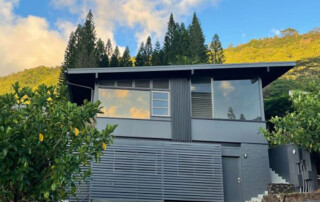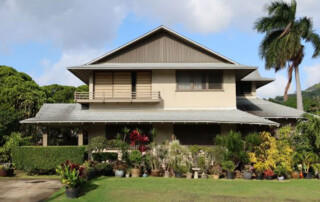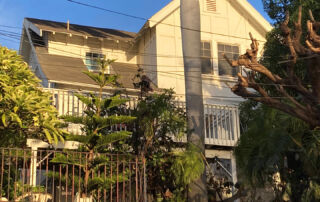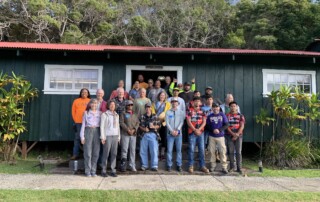Pacific Tsunami Museum Anchors Hilo Waterfront The Pacific Tsunami Museum in Hilo has a refreshed outlook after a major project was completed in Spring 2023. “Restoration of the Pacific Tsunami Museum building generates community pride. Staff members, visitors, residents, and nearby business owners have positively commented on the building's improved overall look and condition,” wrote Joshua Bell, Associate Director. The signature building at 130 Kamehameha Avenue fronts Hilo Bay. It was designed by C.W. Dickey in 1930 as Bishop National Bank, later First Hawaiian Bank. The former bank building withstood the disastrous tsunami waves that hit Hilo in 1946 and 1960. Architectural historian Don Hibbard described the building as, “Hawaiian Classical Revival at its most commanding, this reinforced-concrete, former bank building is clad in cast stone, manufactured on-site by Mario Valdestri. Its Hawaiian interpretation of classical forms includes distinctive coconut husk column capitals. The wrought-iron grillework above the entrance reveals an Art Deco influence” (Buildings of Hawai‘i, 2011). On May 22, 1997, First Hawaiian Bank donated the building to serve as a permanent site for the museum. By June 1998, the Pacific Tsunami Museum was open to the public. The Museum operates with the mission that through education and awareness, no one should ever again die in Hawai‘i due to a tsunami. It provides residents and visitors to the State of Hawai‘i with tsunami education programs by showcasing a series of permanent exhibits that interpret tsunami phenomena, the Pacific Tsunami Warning System, the history of tsunamis in the Pacific Basin, and public safety measures for tsunami disasters. “Efforts to restore and preserve the building are particularly important to the Pacific Tsunami Museum, as its historic exteriors lends to the museum’s mission of sharing of [...]







